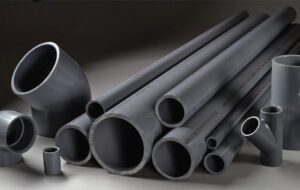What is PVC Plumbing System?
admin
- 0
PVC Plumbing System
PVC plumbing systems are the most popular piping options for homes and commercial spaces. The pipes are easy to clean and have a long lifespan, which reduces maintenance and repair costs. They also withstand high water pressure, making them the ideal choice for water supply lines in buildings and homes.
These pipes are also resistant to corrosion, making them the best option for underground water handling. Many cities deal with burst water mains due to corrosion of traditional metal piping, but PVC is invulnerable to this type of underground corrosion.
The smooth surface of these pipes allows them to move smoothly through your home, which decreases friction and enables efficient water flow. This can also save energy and money by lowering pumping and heating costs. Furthermore, PVC is lightweight, which makes it easier to transport and work with than heavy steel or concrete pipes.
While the advantages of this piping system are obvious, there are some disadvantages as well. PVC may leak chemicals into drinking water, which can cause toxicity and other health issues. However, the PVC industry has worked to reduce the amount of chemicals leaching into water through a recycling program called VinylPlus.
The most common scenario for using this piping system is to transport water. This includes drinking water, sanitary sewer lines, and industrial applications such as manufacturing, mining, and agriculture. PVC is a flexible, durable, and corrosion-resistant material that can withstand high water pressures.
These pipes are also used for waste management, as they are highly resistant to pests and corrosive materials. In addition, the pipes can be cut and molded into various shapes for different uses. Lastly, these pipes are often used as electrical wiring. PVC is a non-conductive material, making it safe for use as an electrical conduit.

What is PVC Plumbing System?
Another type of plastic pipe that is commonly used in homes is CPVC, or chlorinated polyvinyl chloride. This type of pipe is similar to PVC in that it’s resistant to rust, corrosion, and damage from chemicals. However, CPVC can stand up to higher temperatures and pressures, which makes it better suited for certain commercial applications.
Unlike traditional copper, PVC and CPVC can be easily joined together with solvent cements or adhesive fittings. This process is quick and easy, and it prevents water leaks and reduces installation time. In addition, PVC and CPVC are recyclable, which reduces the amount of toxic substances in the environment.
Both PVC and CPVC pipes can be used to convey both hot and cold water. They can even be used for draining applications and are suitable for residential use in conjunction with other piping systems, such as PVC sewer line systems.
Cost-effectiveness is a significant factor driving the adoption of PVC plumbing systems. Compared to traditional materials like copper or steel, PVC pipes and fittings are generally more affordable. The lower material costs, combined with the ease of installation, result in overall cost savings for both initial installations and any subsequent repairs or modifications.
PVC plumbing systems are also known for their insulating properties. Unlike metal pipes, PVC does not conduct heat as readily, which means hot water stays hotter for longer as it travels through the pipes. This insulation helps conserve energy and improves the overall efficiency of the plumbing system.
